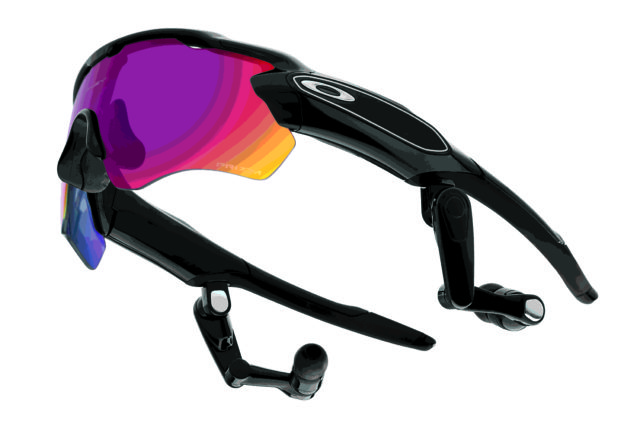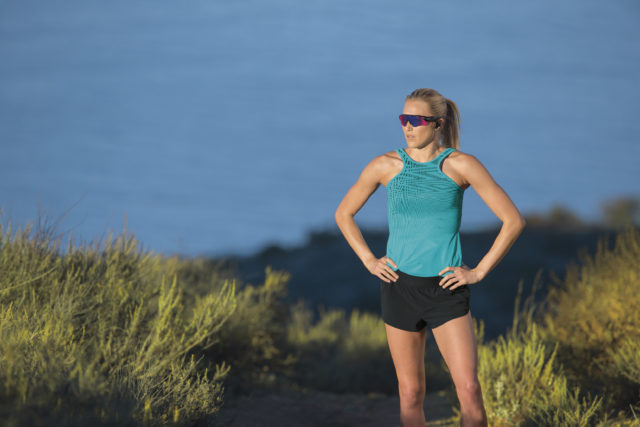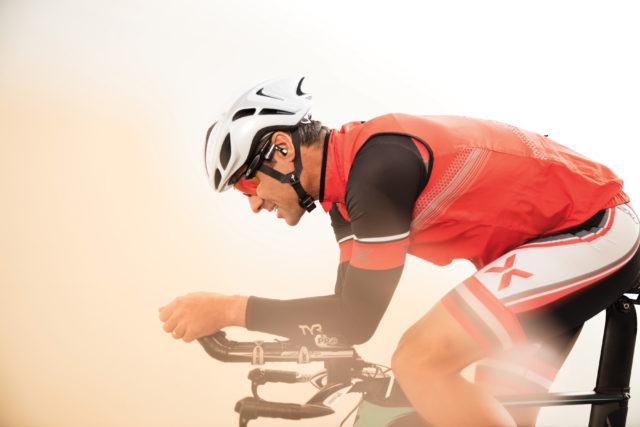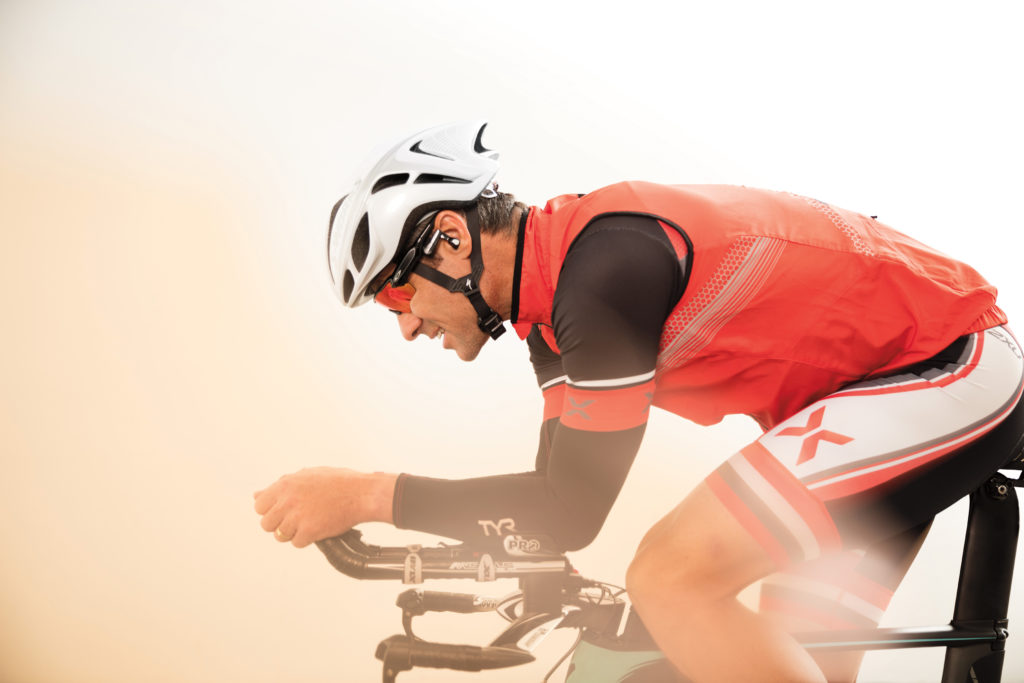Oakley and Intel have partnered for the launch of Radar Pace, a new smart eyewear product that features a real-time voice-activated coaching system to redefine the way athletes train.
The branded innovation, retailing at $450, creates a dynamic training program, tracks performance, virtually coaches in the moment while interpreting data in real time and responds to the user’s questions, allowing people to communicate with the system in a live, natural way during a workout.
[a]listdaily was joined by Scott Smith, vice president of strategic partnerships at Luxottica, the parent company of Oakley, and Chris Croteau, senior director of business development for Intel’s headworn platform division, to discuss how the two brands are pushing the boundaries of innovation.

Intel CEO Brian Krzanich, and Oakley, introduced the Radar Pace at CES this year. Why was now the right time to release it?
Scott: CES is a great platform for the innovation industry to introduce breakthrough technology, and it was the perfect time to formally introduce the collaboration between Luxottica and Intel on Radar Pace. Since CES, the Oakley and Intel teams have been hard at work in the final stages of testing to bring this product to market on October 3—timed to a peak in training and working out and notable competitions and races for both runners and cyclists.
Why is Intel in the smartglasses business? What is the brand trying to accomplish in this space?
Chris: Our foray into smartglasses is core to our overall wearables strategy, as we continue to reinvent the boundaries of computing. We’re exploring new form factors that enable more seamless, intuitive interactions with technology that enhances consumers’ everyday experiences. Moving forward, we plan to harness leading-edge technology to continue our development of head-worn devices—both branded (under Recon) and with our external brand partners—that deliver compelling use cases and real-world benefits. This goal, coupled with a commitment to uncompromising design and usability, make Intel unique in the segment.
How is Radar Pace an experimental play that complements the brand’s other “high-tech” glasses?
Scott: Oakley has always been a technology company wrapped in design, and Radar Pace continues Oakley’s legacy of performance sports and innovation. From the early days of Thump to 3D, Airwave and now Radar Pace, Oakley has always focused on making eyewear smart, stylish, functional and fit for optimal performance.
How are you going to be branding this new vertical?
Scott: Radar Pace is being branded as a smart eyewear featuring a real-time voice activated coaching system. It is Oakley’s first foray into electronically enabled products specifically built for runners and cyclists.

What is toughest part about co-branding and co-creating a product? And how do you overcome that?
Scott: As two companies grounded in innovation, this has been a very effective partnership. We combined Oakley’s heritage in sport innovation and design and Intel’s innovation and technology expertise to create Radar Pace. Throughout the process, we of course challenged each other to push the limits of what we could create. For example, we pushed Intel to find a way to house all technology (wiring, casing, battery, etc.), while still maintaining a sleek sunglasses look that fit the Oakley design requirements. As you can see from the product, we were able to overcome that hurdle, together—all tech was outfitted into a 56 gram product which is a consistent weight for Oakley’s high-performance sport eyewear.
How will Intel’s foray into wearables help the company gain momentum against your rivals?
Chris: As the power of computing extends well beyond PCs, tablets and phones, everyday objects are becoming part of a smart and connected ecosystem that will enable complex use cases, inspire innovation and fundamentally alter our relationship with technology. Intel’s end-to-end capabilities are uniquely and strategically positioned to power not only new wearables and smart devices, but also the data centers and technology backbone for actively analyzing, sharing and acting on data in real-time.
What is the best marketing method to reach CrossFit athletes, bicyclists and marathoners—a predominant group of which is a big sample of your consumer base?

Scott: We are looking to reach athletes across sports and fitness levels. The product is for athletes of all levels looking to progress in their sport. They’re focused on pushing boundaries and setting personal goals, are data driven, competitive and social by nature, and see the value in getting the help they need to improve their performance. The product and our communication will resonate with these athletes because they understand the performance impact that Radar Pace will have on their training.
How are you envisioning the long-term direction of the product, and the future of the technology?
Scott: Today, we are completely focused on Radar Pace and giving it the support it needs in the coming months. Radar Pace was designed with the future of technology in mind, and is a product that will regularly receive updates to its operating system and improve over time.
How does wearable technology and other IoT technology fit within the overall company strategy?
Chris: Intel is focused on developing wearables that are a part of the larger intersection between data, the cloud and the Internet of Things, creating a smart and connected network of technology to enable amazing, new experiences and change the way we live. We believe that wearables have the potential to make consumers’ lives easier, challenge organizations to create new business models and enable research that addresses society’s biggest challenges. This is our vision of how IoT will work for us, with wearable devices at the core. With our deep data center experience, along with our new and exciting innovations in wearables and IoT, Intel is uniquely equipped to help make this vision a reality.
Follow Manouk Akopyan on Twitter @Manouk_Akopyan

